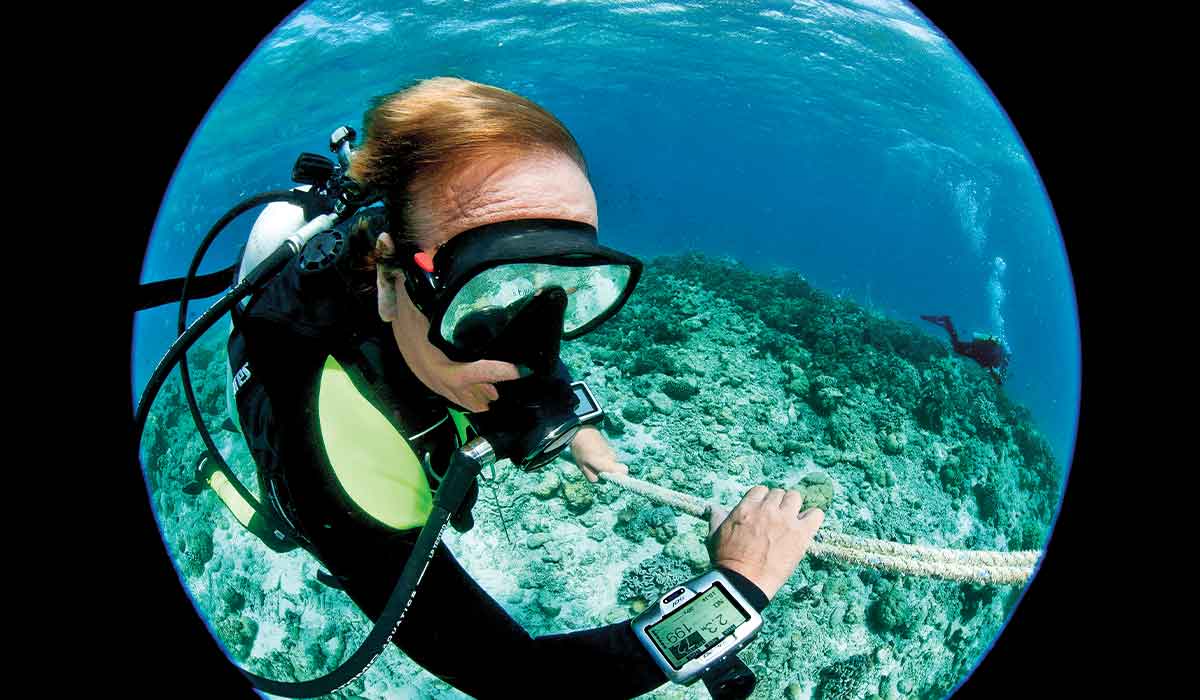dmaziuk
Contributor
Presumably they were worried about slow tissues on-gassing during ascent? E.g. 40 msw at 5m/min would take a whooping 8 minutes, so for compartments slower than 12.5 minutes it's probably safe to ignore.
Welcome to ScubaBoard, the world's largest scuba diving community. Registration is not required to read the forums, but we encourage you to join. Joining has its benefits and enables you to participate in the discussions.
Benefits of registering include
I never read the detailed primary source materials, myself. I was taught during my open water course (YMCA/NAUI, in 1986) that the U.S. Navy brought up their divers (salvage/repair divers wearing heavy gear) from air dives at an ascent rate of 60 fpm per the U.S. Navy Tables. This predated the use of these tables for SCUBA.Presumably they were worried about slow tissues on-gassing during ascent? ...
Well, either they were wrong or you misremember. The hard-hat divers were brought up at 25 ft/min, and the "new" scuba divers wanted to go 100 ft/min. The Navy only wanted one set of tables so they compromised on 60 ft/min for everybody. That is now 30 ft/min for everybody.I never read the detailed primary source materials, myself. I was taught during my open water course (YMCA/NAUI, in 1986) that the U.S. Navy brought up their divers (salvage/repair divers wearing heavy gear) from air dives at an ascent rate of 60 fpm per the U.S. Navy Tables. This predated the use of these tables for SCUBA.
rx7diver
No that is completely prohibited. 1) you'd need a permit from DNR (they own all submerged lands) and they aren't going to give you one, and 2) you'd kill all the waterskiers blasting around when they run into your buoy.Nobody puts mooring blocks in at valuable dive sites?
Interesting. Do you have a source for this? I'll google when I have time.Well, either they were wrong or you misremember. The hard-hat divers were brought up at 25 ft/min, and the "new" scuba divers wanted to go 100 ft/min. The Navy only wanted one set of tables so they compromised on 60 ft/min for everybody. That is now 30 ft/min for everybody.
According the to attached reference, the US Navy ascent rate changed from 60 to 30 ft/min in 1993.The current Navy tables (Rev 7A) say nothing about ascent rates for NDL dives. The only statement is:
9-6.3 Ascent Rate. The ascent rate from the bottom to the first decompression stop,between decompression stops, and from the last decompression stop to the surfaceis 30 fsw/min (20 seconds per 10 fsw). Minor variations in the rate of ascentbetween 20 and 40 fsw/min are acceptable.
Older versions of the Navy tables:
Rev 4 (1999): 30 ft/min
Rev 1 (1981): 60 ft/min
EDITED: 1981 was Rev 1, not Rev 2. See U.S. Navy Diving Manual - Wikipedia.
Interesting. Do you have a source for this? I'll google when I have time.
rx7diver

I'd be happy to provide it to you on Dropbox if you want a copy.
page 15 of the 1994 DSAT report on the development of the RDP; that report is too big to attach here. It used to be available on Rubicon. I'd be happy to provide it to you on Dropbox if you want a copy.
The DSAT Report on the RDP is now available in the ScubaBoard Download Library.Would you mind to also share it with me?
Additional info on Why 60 ft/min.
Ascent Rates
Ascent rates are influenced by different variables, and should be kept slow to avoid complications. Read more about ascent rates.dan.org
See also this quote:Safe Ascent Rate Guidance
When I read through different diving physiology discussions, I see reference to both 30 feet/minute and 60 feet/minute as the "maximum safe ascent speed". Is this one of those things where the maximum is 60 feet/minute but 30 feet/minute is recommended to provide a margin of conservatism? Or...scubaboard.com
Because of the development of scuba apparatus in WWU, the tables were now made to includemore appropriate depth increments, and the rate of ascent had been changed from the earlier 25 fsw/min to 60 fsw/min, where it has remained. The ascent rate was a compromise; Navy scuba divers wanted a rate of 100 fsw /min, but it was difficult to winch a tethered diver up at this rate, and the same rate had to be used by all Navy divers (Lanphier, 1990). The choice was a figure somewhat in between,the easy-to-calculate 60 fsw/min or I fsw/sec. Decompression "theory" did not enter into this choice.which is from page 15 of the 1994 DSAT report on the development of the RDP; that report is too big to attach here. It used to be available on Rubicon. I'd be happy to provide it to you on Dropbox if you want a copy.
